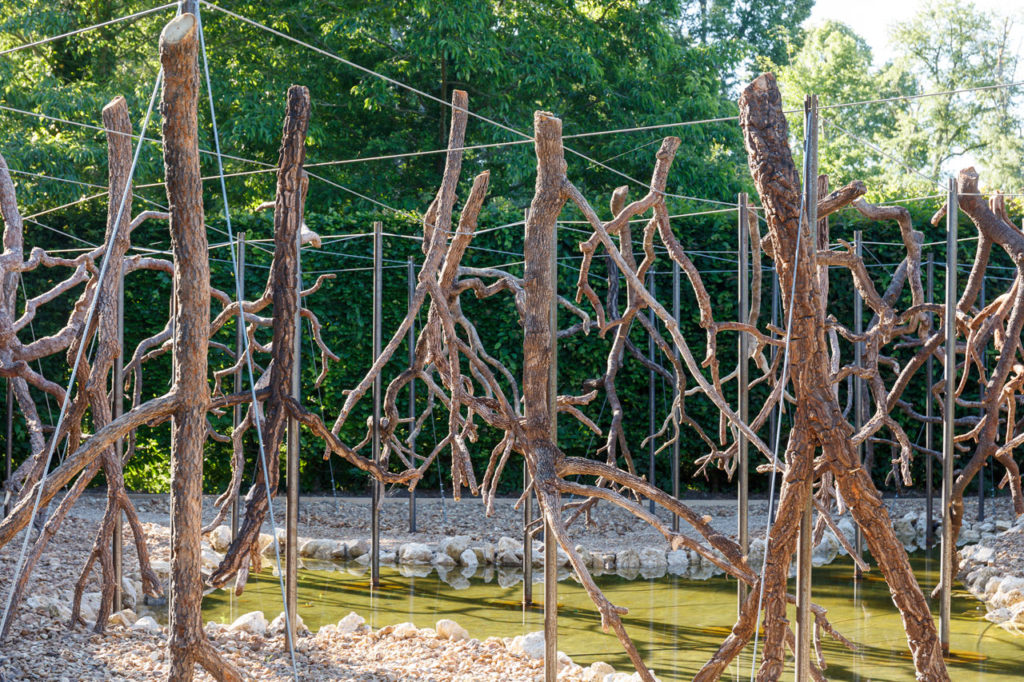
The 2020 edition of the International Garden Festival in Chaumont-sur-le-Loire was opened last May, and among the gardens of the exhibition is Paysage de Feu, Vazio S/A’s installation made with trees from the Cerrado.
With an international reputation, Chaumont is “the world laboratory in the field of gardens and contemporary landscape creation”, and takes place on the premises of a castle built 500 years ago in the Loire Valley, the region in the interior of France listed by UNESCO and known for its splendid Renaissance castles.
In February, and after a long Brazil-France trip of more than 9,000 kilometers, the branches of the Cerrado arrived in Chaumont, where they were assembled tip down.

The Cerrado
The second largest ecological formation in Brazil, the Cerrado is a tropical savanna that spreads over the hinterlands of Brazil and has an area of approximately 1.5 million km² (more than twice the area of France). It has about a third of the Brazilian biodiversity, 5% of the world's flora and fauna and is the source of waters that form the country's three major hydrographic basins (Araguaia/Tocantins, São Francisco and Paraná /Paraguay).
Unfortunately, because it is a tropical savannah seen only as the poor vegetation biome and as an expansion reserve for agricultural areas, the Cerrado is helpless in terms of legal protection. Unlike the Amazon and the Atlantic Forest, the Cerrado is not classified as a Heritage in the Federal Constitution, despite its biodiversity being considered one of the 25 richest on the planet and, in terms of savanna, being the richest.
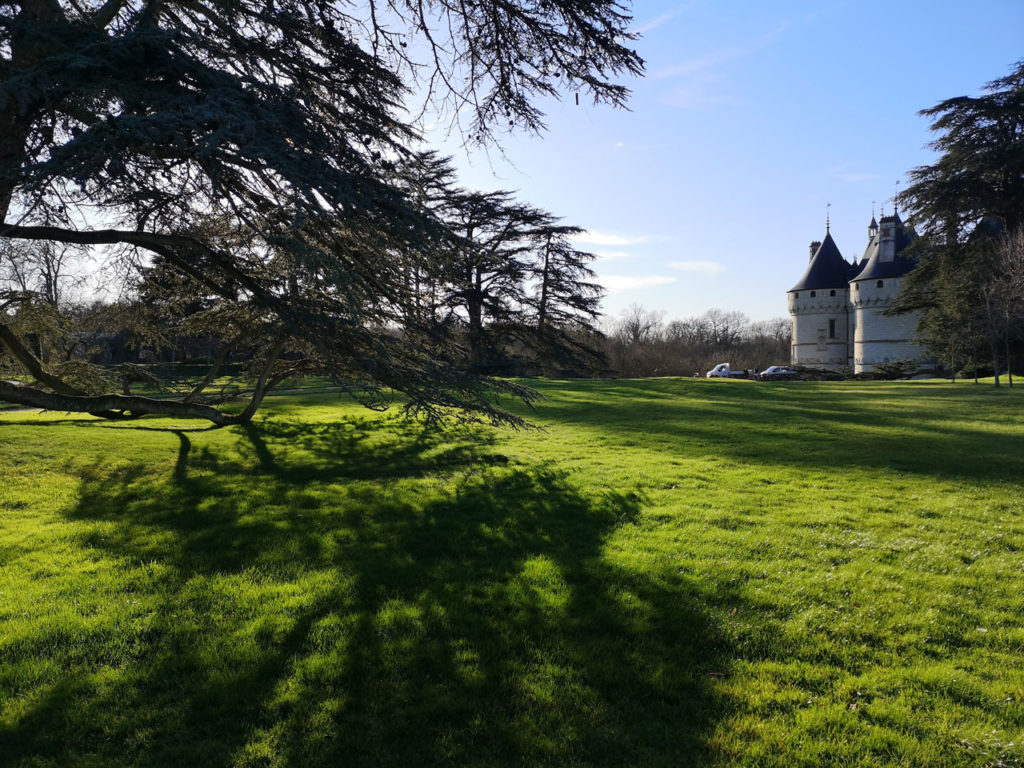
The garden
Paysage de Feu, the proposal for the Chaumont Festival whose theme this year is “Return to Mother Earth”, takes the destruction of the Cerrado as a project motto. In the last few months, the eyes of the world have turned to the burning of the Amazon, while the Cerrado continues to be destroyed to become soy and pasture without any national or international repercussion.
Awarded by the Festival’s jury, Paysage de Feu is an arrangement of pruned branches and burned logs collected in a protected area at the foot of Sierra da Moeda, a mountain range close to the Cerrado House (also designed by Vazio S/A). The project showcases the branches in line, like slaughtered animals hanging in a refrigerator, and functions as a “posthumous botanical garden” of species found in the states of Minas Gerais, Goiás and Bahia. In principle, it is a dead garden made up of plants exposed upside down.
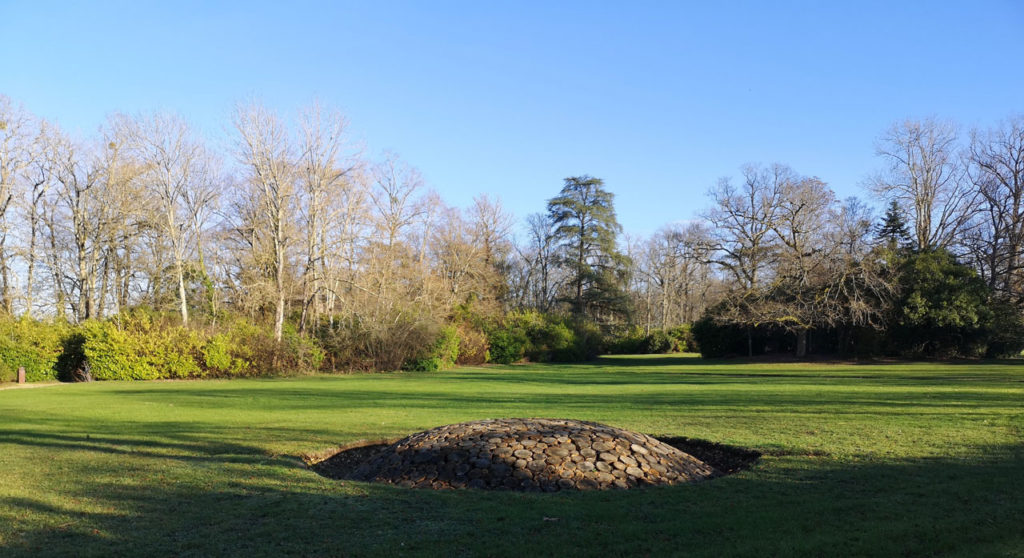
In addition to the obvious reference to slaughterhouses, another connotation of the garden is that the Cerrado is a biome of trees with roots much larger than the branches. They are plants adapted to drier regions, capable of reaching very low water tables and, therefore, plants that are more terrestrial than aerial. Organs without eyes and ears that explore an underground world without sun and movement, the roots make trees into amphibious beings, linking earth to air, living in a cryptic world and nourishing the leaves that seek the light (Emanuele Coccia, 2016). It is precisely in the depths of the acid and useless soil of the Cerrado that they find life where no other organism does, transforming everything they touch into energy and food.
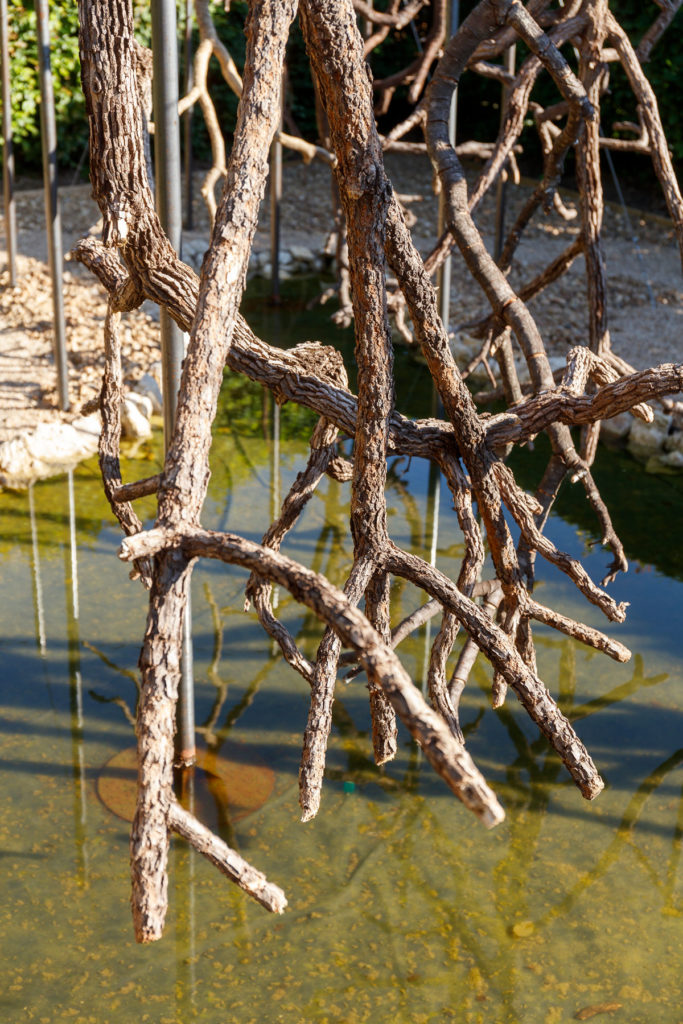
Landscape of Fire
Technically, the twisted aspect of the branches is explained by the "burning of the apical meristem." All plants have an apical meristem (growth zone) and secondary meristems that are inactive, only working if the apical meristem die. With the periodic fires that occur in the Cerrado, the apical meristem would be burned and, with that, the secondary meristem would be activated and a growth in another direction would begin. The explanation of occasional fire for natural reasons gains ground when analyzing some seeds that only germinate after being burned - which can be considered a protection against fire - or even when analyzing the extremely thick bark, which is another protection against fire.
If the convoluted shapes of the trees here are like this because of natural fires, then we have the plant composition of this biome as a consequence of its ability to adapt to destruction by fire. A pyro-landscape consisting of a pyro-vegetation of two types: passive pyrophytes, of species that resist fire (convoluted trees); and active pyrophytes, made up of species that regenerate thanks to fire (grasses).
Much more alive than dead, Paysage de Feu is a tropical savanna that floats over (and does not touch) the cold, sandy soils of the Loire River valley; a matrix of inverted branch-roots that proposes other meanings for the Cerrado, the trees, the fires.
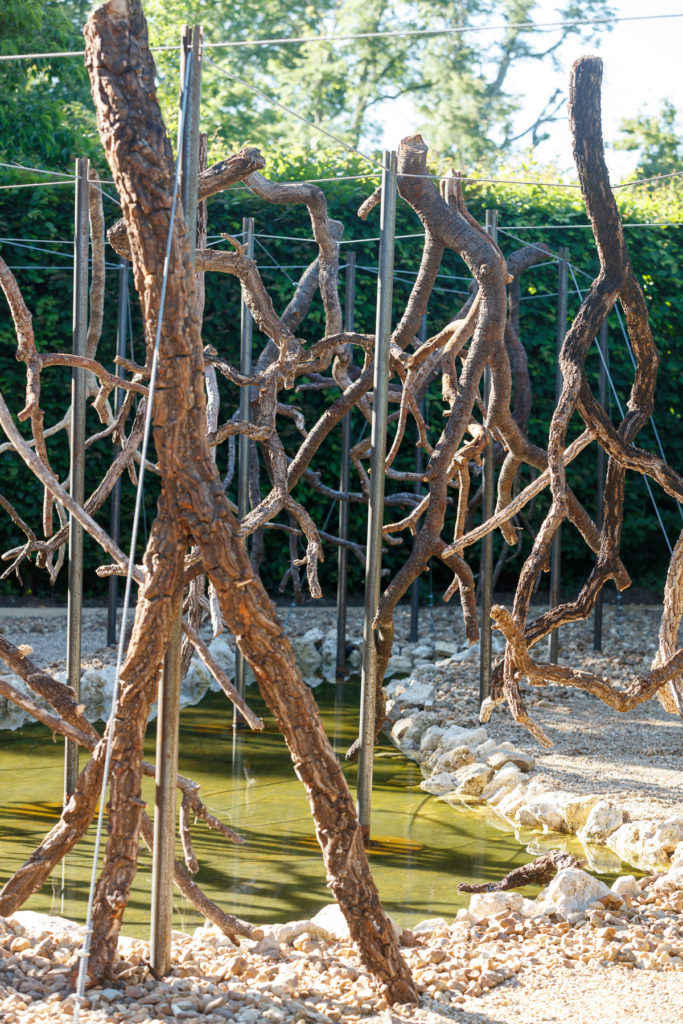
The gathering
The pieces were collected in the municipality of Moeda, in the state of Minas Gerais. Species identification was carried out with the advice of biologist Barbara Pacheco. No trees were removed, all of the branches came from pruning.
The service was done with the help of workers from the region who know all the trees collected by the popular name. The collected and exposed species are:
all of them typical plants of the Cerrado of Minas Gerais.
comments